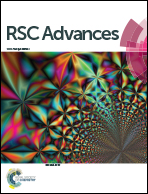Enhancing the dimethyl ether carbonylation performance over hydrogen-type mordenites modified by pyrazole hydrochloride
Abstract
Hydrogen-type mordenite (HMOR) modified with pyrazole hydrochloride (Pya·HCl) was prepared by the ion exchange method. The results showed that Pya·HCl introduction significantly improved the activity and stability of HMOR in the carbonylation reaction of dimethyl ether (DME) to methyl acetate (MA). Small pyrazole ions (HPya+) entered into the twelve-membered ring (12-MR) pores of HMOR and selectively replaced part of the Brønsted acid (BAS), thus suppressing the formation of carbon deposits. The modified HMOR presented a larger specific surface area and pore volume, which provided larger channels for molecular diffusion. Additionally, non-framework aluminum was removed by the acidic Pya·HCl solution, resulting in the formation of mesopores, which facilitated the migration of carbon-deposited species from the inside of the zeolite to the outside.



 Please wait while we load your content...
Please wait while we load your content...